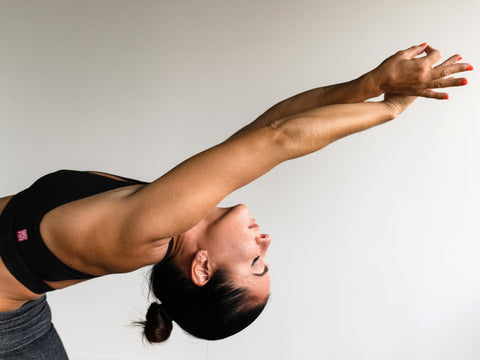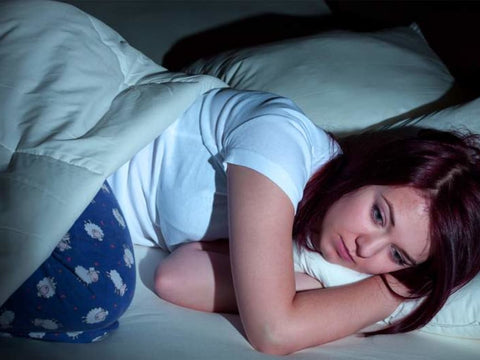If you find yourself scanning email and news headlines before you get out of bed in the morning, racking up the hours on your laptop at work, then spending the evening watching TV or nodding off with your phone in hand, you’re not alone.
On average, American adults spend eleven hours a day on electronic devices, a trend significant enough for the American Optometric Association to label it as a medical condition. Headaches, blurred vision, eye strain, and dry eyes are symptoms of Computer Vision Syndrome, optometry parlance for the effects of excessive daytime use of digital screens has on your vision.
Natural blue light from the sun helps keep you awake and energized throughout the day. But the increased use of artificial blue (and lesser-known green) light-emitting devices, especially into the evening, is proving to have equally severe consequences on your general health. Decreased melatonin production and a drop in daytime alertness are signs that your digital habits are preventing you from getting a good night’s sleep. Nighttime use of electronic devices disrupts your circadian rhythm, the biological processes that govern your 24-hour sleep/wake cycle. This interruption of your body’s natural clock doesn’t only affect your sleep, though. It has been shown to lead to weight gain, anxiety, depression, and a higher risk of chronic illnesses like diabetes and cardiovascular disease.
While strategies like taking frequent screen breaks and adjusting overhead lighting can help with eye strain, blinky eyes, and blurred vision, adding SafetyBlue™ blue and green light-blocking glasses to your healthy living toolbox is one of the most effective ways to protect your vision, maintain energy and focus, and meet the demands of our daily lives on screens.
The founders of SafetyBlue, a husband and wife team, were graphic designers who suffered from eye strain at work. They researched and developed glasses to combat the problem, and they ultimately were able to create classes that solved their problem. They also realized that the glasses helped them get better sleep at night as well, and SafetyBlue was born.
Day-Use Computer Glasses
The SafetyBlue™ Day Collection blocks 35-50 percent of blue light, offer full UV protection and have five layers of defense are built in to reduce eye strain while allowing enough natural blue light through to keep you going during the day. Choose from two classic styles; Screen Savior and Game Changer both have a yellow lens that replicates lighting on a sunny summer day and brightens screen colors.
Night Glasses for Winding Down and Sleep

It was once supposed that only blue light interfered with sleep, but it is, in fact, both blue and green light frequencies at night which signal to the brain to wake up as opposed to darkness which signals to the brain to fall into a natural circadian rhythm and produce melatonin for restful sleep. Night Collection glasses block 99 percent of short wavelength blue light from 450-570 nanometers (nm) and 99 percent of short wavelength green light from 495-570 nm. They’re made to be worn up to two hours before lights out. In order to be truly effective, they severely alter the blue and green colors on monitors and TV screens, so it may take time to adjust to the new red world you’ll encounter.
Sleep Savior™ night time frames combine style with functionality. In addition to classic frames, the Fit-Over glasses can be worn over prescription glasses, blocking direct and peripheral blue and green light. The Ultra style includes a removable, protective foam gasket for the most form-fitting level of light protection.
Biohack your way to Better Health

Think of your light-blocking glasses like your toothbrush, sunblock, or gym membership—all proactive tools you incorporate into your weekly routine to maintain a healthy lifestyle. Daytime and nighttime glasses work in tandem to deliver optimum results.
If you’re jet-lagged, or you’ve booked a ticket on the red-eye, use night blockers to get the sleep you need when you travel for work or pleasure. Perhaps you sleep next to someone who uses an e-reader late into the night. Night glasses will help you fall asleep faster and block the light frequencies that interfere with your slumber. For those dealing with eye problems like macular degeneration, as well as age-related insomnia, light-blocking glasses offer the dual benefits of protection from blue and green artificial light and increasing melatonin production for deeper sleep.
Ritualize Your Night Blocking Routine
If you’re not sure how to work sleep glasses into your evening activities, develop a pre-bedtime routine for yourself that includes the things that relax you the most, like meditation, a good book, a long soak in the bath, and a soothing playlist. Use blue blocking apps on all your electronic devices, set a firm deadline to nix the electronic devices, slip on your Sleep Savior™ glasses, and ease into a restful slumber.
Written by Ann Gibson for Matcha in partnership with SafetyBlue and legally licensed through the Matcha publisher network. Please direct all licensing questions to legal@getmatcha.com.




